FUNDING CUTS IMPACT CT HUMANITIES: Help CT Humanities navigate recent funding cuts and continue our vital work across Connecticut. All donations made to CTH will be matched dollar-for-dollar up to $50,000. Donate today!
News & Updates
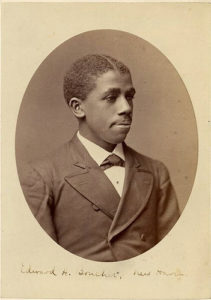
Edward Alexander Bouchet: The First African American to Earn a PhD from an American University
Edward Alexander Bouchet was a physicist who was among Yale’s first African American students, and reportedly became the first African American in the United States to earn a PhD.
Read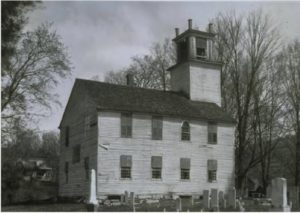
A Valley Flooded to Slake the Capital Region’s Thirst
From 1927 to 1948, the Metropolitan District Commission built the Saville Dam and flooded the valley to create the Barkhamsted Reservoir, displacing over a thousand people.
Read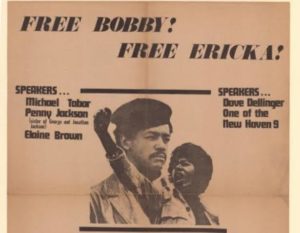
“Free Bobby, Free Ericka”: The New Haven Black Panther Trials
In 1969, the Black Panther Trials brought national attention to New Haven as prosecutors charged members of the radical movement with murdering one of their own.
Read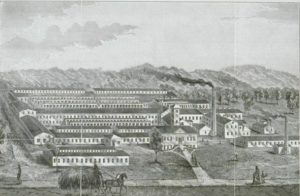
The Cheney Brothers’ Rise in the Silk Industry
Building a business on the back of an insect may seem foolish but for Manchester’s Cheney Brothers silk mill, it became the ticket to global success.
Read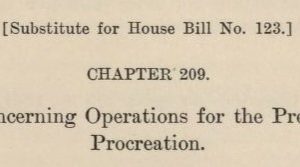
LGBTQ+ Mental Health Treatment in the 20th Century
The simultaneous development of accepted mental health practices and LGBTQ+ visibility over the decades offers a chance to examine how psychological research contributed to the discrimination of LGBTQ+ individuals and communities.
Read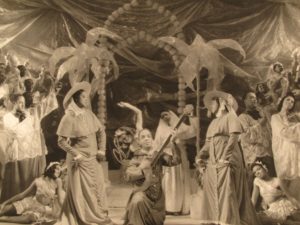
Four Saints in Three Acts Debuts – Today in History: February 7
On February 7, 1934, the Wadsworth Atheneum debuted the modernist opera Four Saints in Three Acts in its new Avery Memorial Theater.
Read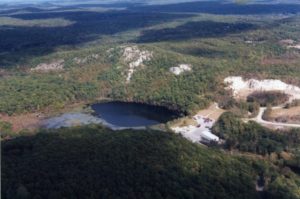
Breaking the Myth of the Unmanaged Landscape
Evidence of early Native land use is etched into the landscape and preserved in oral tradition as well as the historical and archaeological records.
Read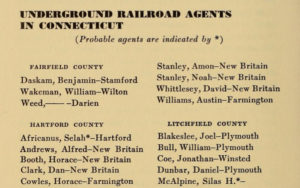
New Britain Plays Part in the Underground Railroad
The Underground Railroad, developed in the early 19th century, was a system of safe havens designed to help enslaved people escape to freedom.
Read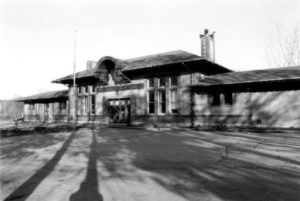
Henry Bacon Helps Beautify Naugatuck
Best known for the Lincoln Memorial, this architect also designed a railroad station, WWI monument, and a bridge for Naugatuck.
Read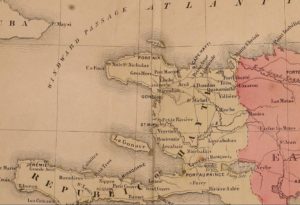
Ebenezer Bassett’s Historic Journey
Ebenezer Bassett, an educator, activist, and associate of Frederick Douglass, served the US as its first African American ambassador.
Read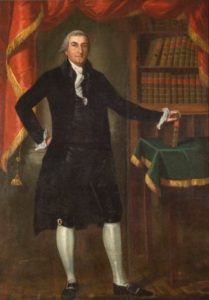
Uriah Tracy Authors the Rules for Impeachment
Uriah Tracy was an attorney and politician who took up arms against the British after the Battles of Lexington and Concord.
Read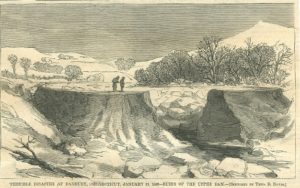
Frozen Reservoir Destroys Danbury – Today in History: January 31
On January 31, 1869, Danbury’s Kohanza Reservoir froze.
Read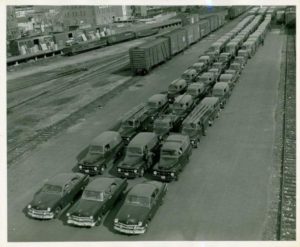
G. Fox and the Golden Age of Department Stores
Founded by Gerson Fox in 1848, G. Fox & Co. went on to become the nation’s largest privately owned department store.
Read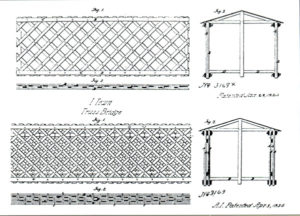
Town Patents the Lattice Truss Bridge – Today in History: January 28
On January 28, 1820, architect Ithiel Town was granted a patent for a wooden truss bridge, also known as Town’s Lattice Truss.
Read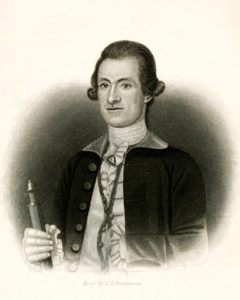
William Douglas: A Colonial Hero’s Sacrifice
William Douglas was a successful merchant and military leader who settled in North Branford just prior to the Revolutionary War.
Read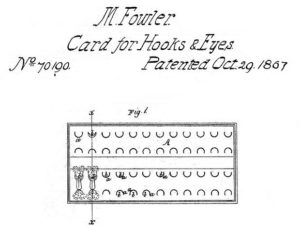
Family Ties Bring Together North Branford Industry
In 1830, a resourceful industrialist opened a button making shop in what today is the Northford section of North Branford.
Read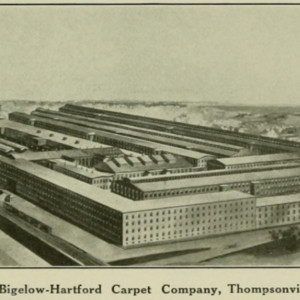
First Connecticut Carpet Mills Emerge in Simsbury and Enfield
In the 1820s, the first two notable carpetmakers emerged in the north central part of Connecticut—the Tariff Manufacturing Company and the Thompsonville Carpet Manufacturing Company.
Read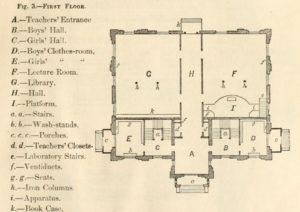
Henry Barnard Advances State and National Education Initiatives
This 19th-century reformer sought to promote harmonious social and civic behavior by revamping the US school system.
Read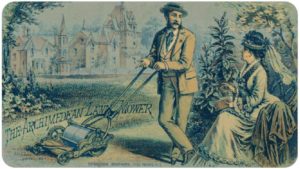
Selling Connecticut Products Abroad
In the mid-1800s, manufacturers from Connecticut found new overseas markets for everything from clocks and firearms to lawn mowers and machetes.
Read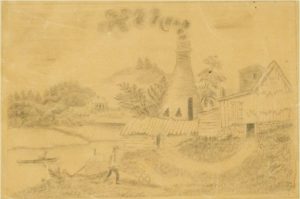
From Kiln to Collection: Norwich Pottery and Its Makers
Despite the lack of good local clay, Norwich potteries flourished, turning out jugs, jars, crocks, pie plates, dishes, and other utilitarian objects.
Read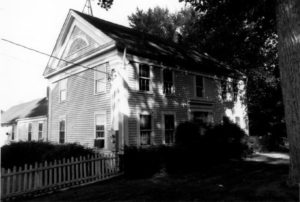
Franklin’s Ashbel Woodward was a Battlefield Surgeon and Historian
Ashbel Woodward was a physician, historian, and farmer who spent most of his life serving the town of Franklin.
Read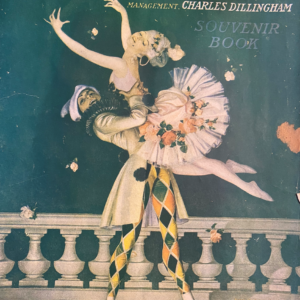
Hartford’s Charles Dillingham Discovered Broadway Stars
After growing up in Hartford, Charles Dillingham explored numerous career paths including newspaper publishing, politics, and—most famously—theatrical managing and producing.
Read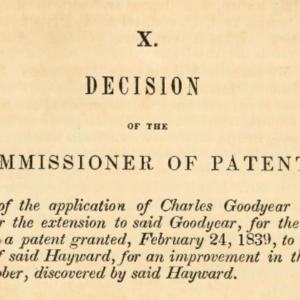
Rubber Vulcanization and the Myth of Nathaniel Hayward
Colchester has a persistent myth that Hayward invented vulcanization—a process that helps make rubber useful for manufacturing—but did not receive the credit he deserved.
Read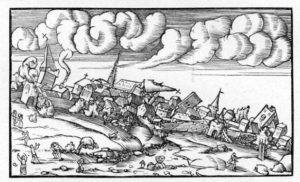
The Surprising Prevalence of Earthquake Activity in Connecticut
Connecticut has experienced thousands of earthquakes since European settled the area, the most active site being the village of Moodus in East Haddam.
Read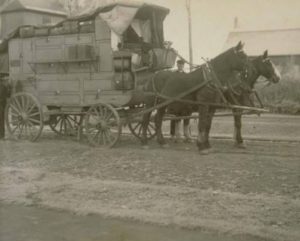
New Britain’s Yankee Peddlers Boost 18th-century Economy
While the rural economy of the North in the 18th century focused on local exchanges of goods within a community, Yankee peddlers used their mobility to bring finished products directly to the consumer.
Read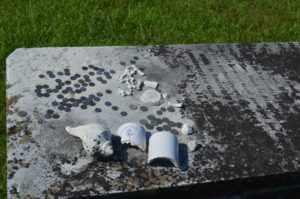
Hidden Nearby: Henry Obookiah’s Cornwall Grave
Heneri Opukaha’ia (Anglicized as Henry Obookiah in his lifetime) of Hawaii was a student of the Foreign Mission School in Cornwall.
Read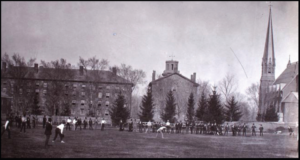
Andrus Field 1831–1911: Athletics and the Environment
The building of Andrus Field on the campus of Wesleyan University demonstrates changes made to the built environment to meet the changing needs of a local community.
Read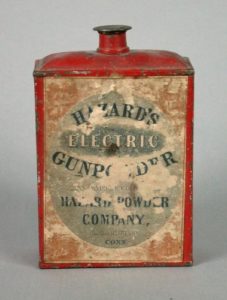
Colonel Augustus G. Hazard, Gunpowder Manufacturer – Who Knew?
By 1843, Augustus Hazard and partner Allan Denslow formed a joint stock venture called the Hazard Powder Company.
Read
Bridgeport’s WPKN: Going Strong After Half a Century
Bridgeport’s community radio station, WPKN, is still going strong after half a century, offering unique and eclectic programming.
Read
Jim Flora Captures 20th-Century Pop Culture
From jazz album covers to magazines and children’s books, Rowayton artist Jim Flora created works that helped document life in 20th-century America.
Read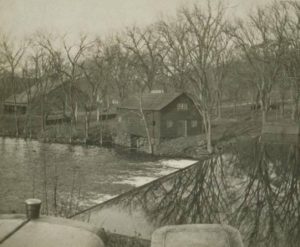
Powder Hollow in Hazardville – Who Knew?
40% of all the gunpowder consumed in the Civil War came from Powder Hollow in Hazardville (a part of Enfield, Connecticut).
Read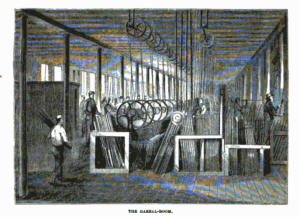
Norwich’s “Volcanic” Past
With its water power, its location, and proximity to major port cities, Norwich has been attracting gun manufacturers since the American Revolution.
Read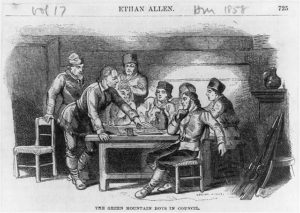
Ethan Allen Born – Today in History: January 10
On January 10, 1738, future hero of the Revolutionary War Ethan Allen was believed to have been born in the frontier village of Litchfield, Connecticut.
Read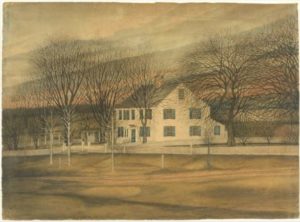
The Smith Sisters and Their Cows Strike a Blow for Equal Rights – Today in History: January 8
Abigail and Julia Smith of Glastonbury (along with Isabella Beecher Hooker) fought for a woman’s right to speak at town meetings and have a say in government.
Read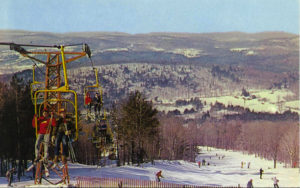
Mohawk Mountain Made Snow for Winter Sports Lovers – Who Knew?
In the 1930s, skiing became a popular pastime at Mohawk State Park in Cornwall and became famous for documenting the first artificial snow.
Read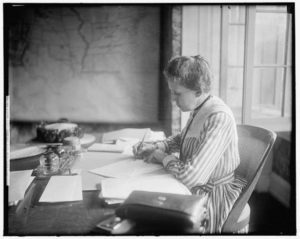
Ida Tarbell: The Woman Who Took On Standard Oil
Ida Tarbell became one of the most famous “muckraking” journalists in 19th century America, thanks largely to her investigation of the Standard Oil Company.
Read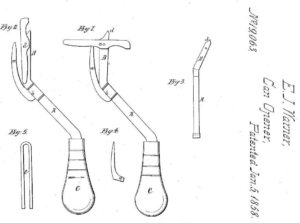
The First US Can Opener – Today in History: January 5
On January 5, 1858, Waterbury native Ezra J. Warner invented the first US can opener.
Read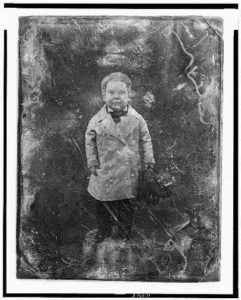
“Tom Thumb” Born – Today in History: January 4
Charles Stratton, born in Bridgeport on January 4, 1838, toured the world with P. T. Barnum under the name, General Tom Thumb.
Read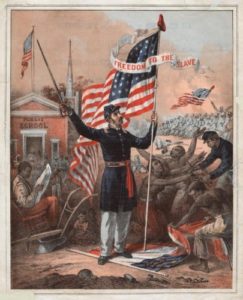
From the State Historian: Connecticut’s Slow Steps Toward Emancipation
Slavery remained in the Land of Steady Habits until 1848, and it was not quick to advance suffrage for African Americans, either.
Read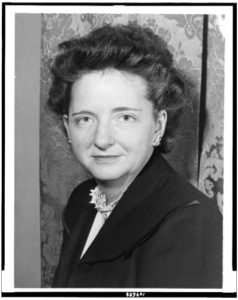
Elizabeth Bentley Born – Today in History: January 1
Elizabeth Terrill Bentley is best known for her role as an American spy for the Soviet Union—and for her defection to become a US informer.
Read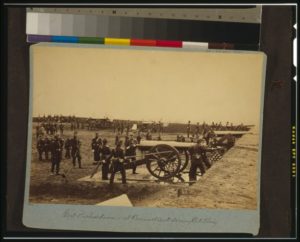
The Complicated Realities of Connecticut and the Civil War
The history of the Civil War surrounds Connecticut residents both in terms of its physical realities and in the lasting legacies of a complicated conflict.
Read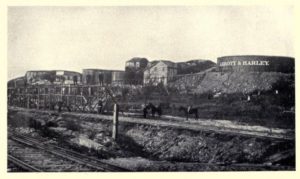
William Hawkins Abbott Finds the Energy to Power the Northeast
William Hawkins Abbott helped transform the market for affordable energy through his oil refining, pipeline, and distribution networks.
Read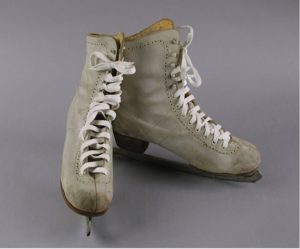
Skating Through Winter
By the 1850s, better-designed skates and interest in healthful outdoor activities made ice skating an increasingly popular leisure activity.
Read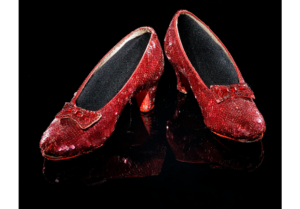
There’s No Place Like Home for the Designer of Dorothy’s Ruby Slippers – Who Knew?
Connecticut-born Adrian, the American clothing designer who found success in Hollywood, designed Dorothy’s ruby slippers for The Wizard of Oz.
Read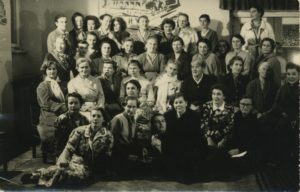
A Godmother to Ravensbrück Survivors
Philanthropist Caroline Ferriday aided women whose internment at a German concentration camp during WWII left them scarred, physically as well as psychologically.
Read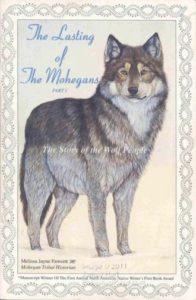
Chief G’tinemong/Ralph W. Sturges
This Mohegan Chief is remembered for successfully guiding the Tribe through the final stages of Federal Recognition, which it obtained in 1994.
Read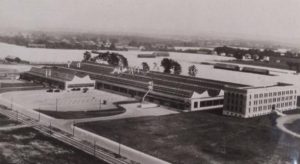
The Early Years of the Pratt & Whitney Aircraft Company
Wasp and Hornet engines secure the reputation and success of this 1920s start-up venture.
Read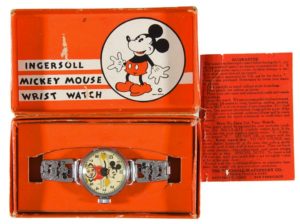
Waterbury Clock Company Saved by Mickey Mouse – Who Knew?
The Ingersoll Waterbury Company (now Timex) was saved from bankruptcy during the Great Depression, in part, by the introduction of the Mickey Mouse watch.
Read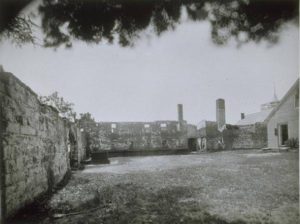
First New-Gate Prisoner – Today in History: December 22
On December 22, 1773, John Hinson, the state’s first inmate, arrived at New-Gate Prison.
Read
Jim Henson, the Muppets, and Greenwich
Between 1964 and 1971, the famous puppeteer and creator of Sesame Street, Jim Henson, lived in Greenwich and created many of his most recognizable characters.
ReadMore Articles




